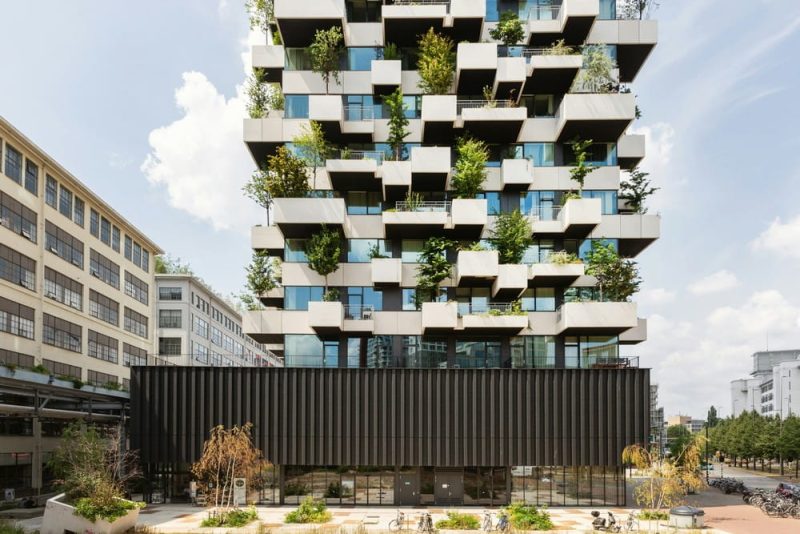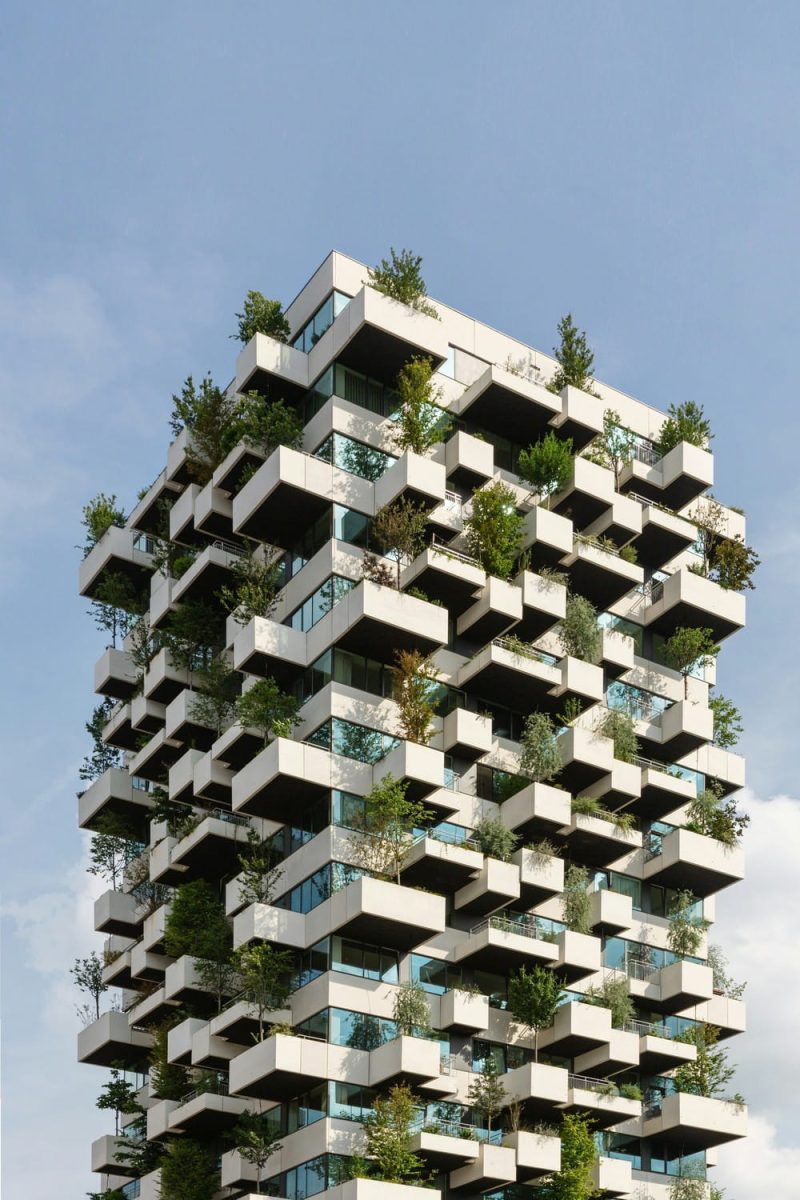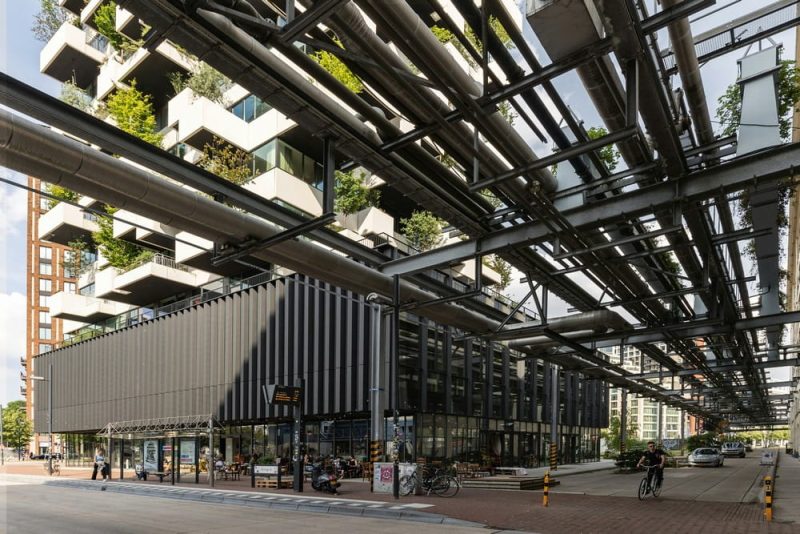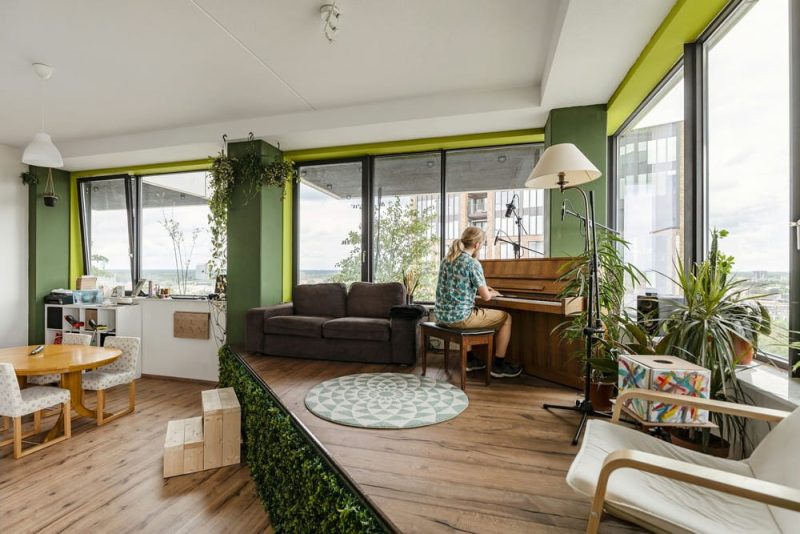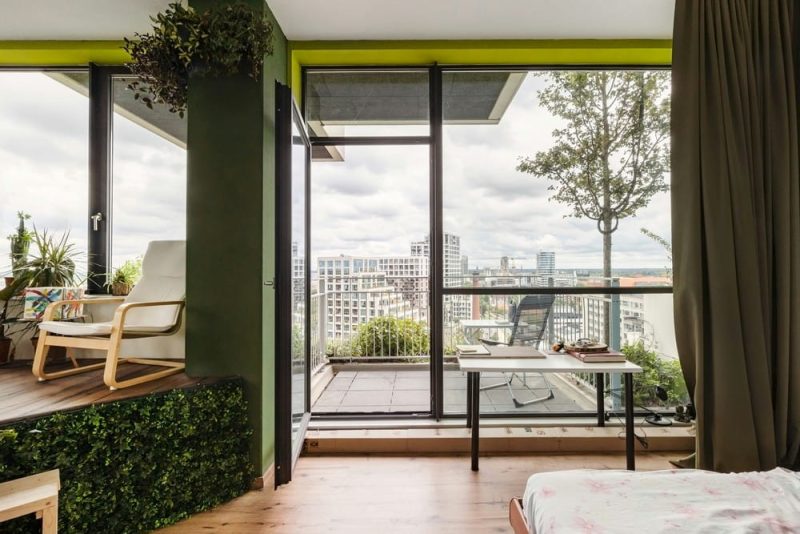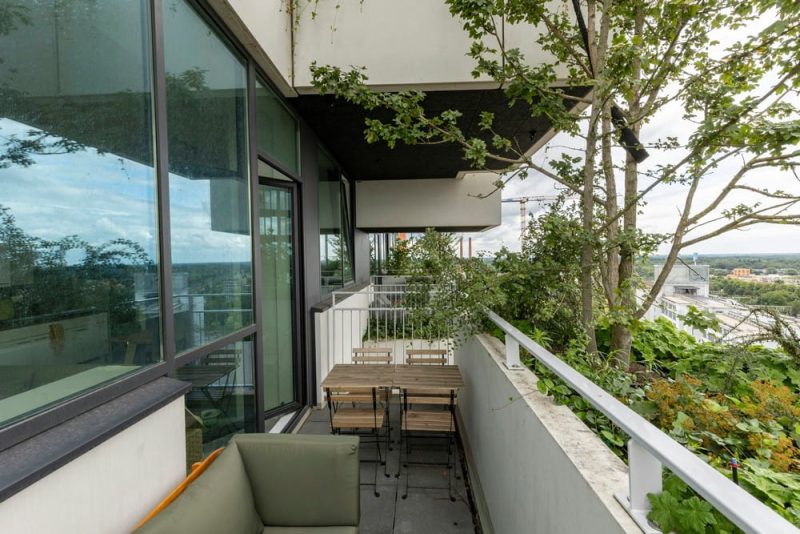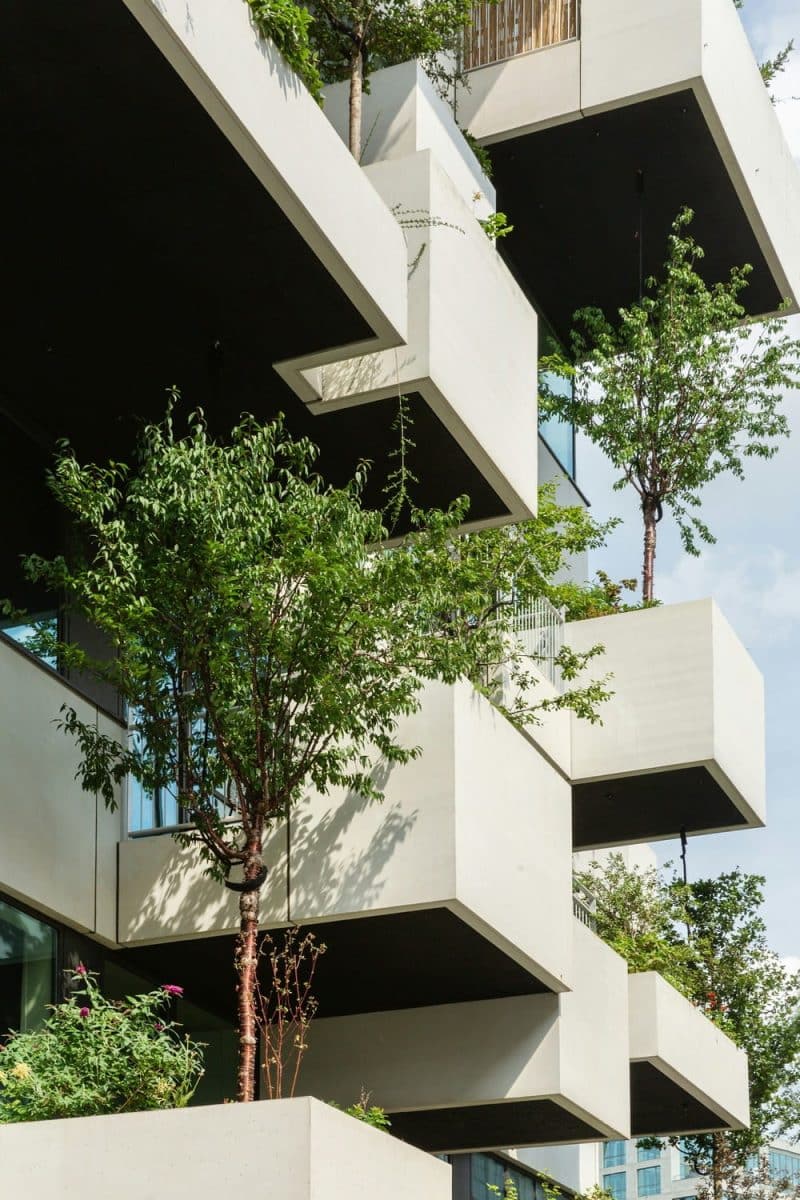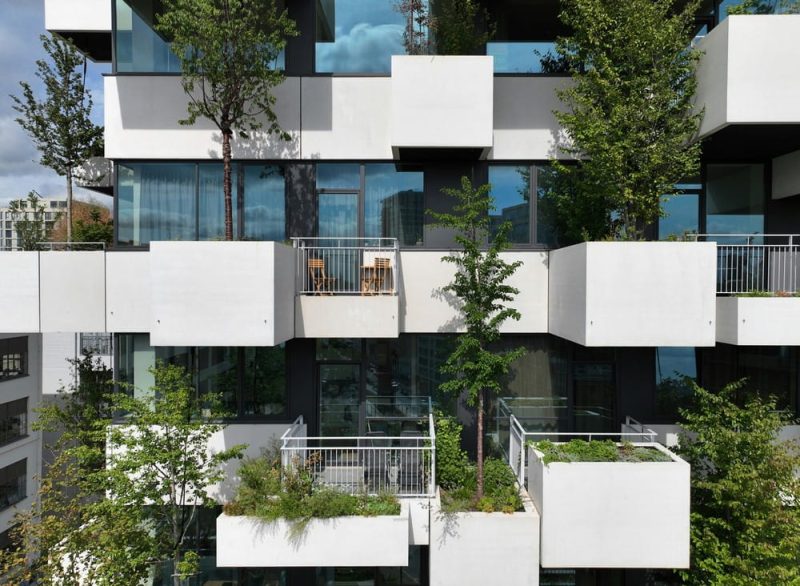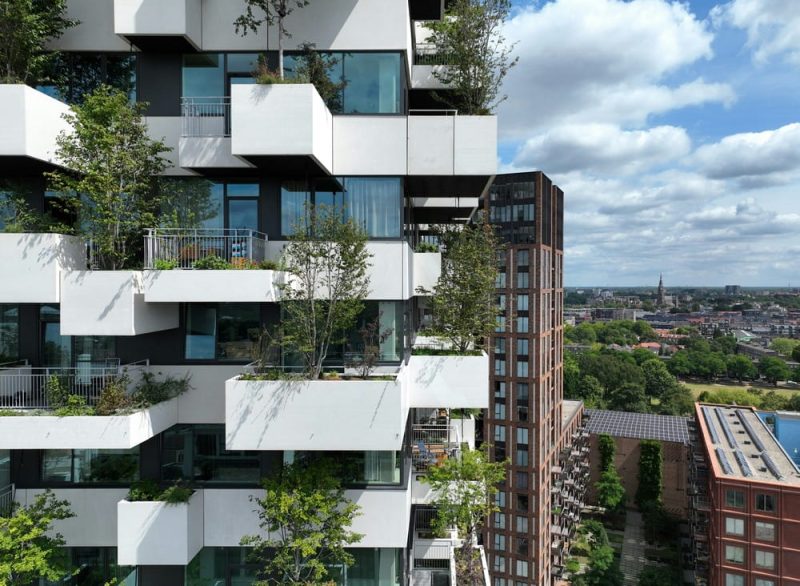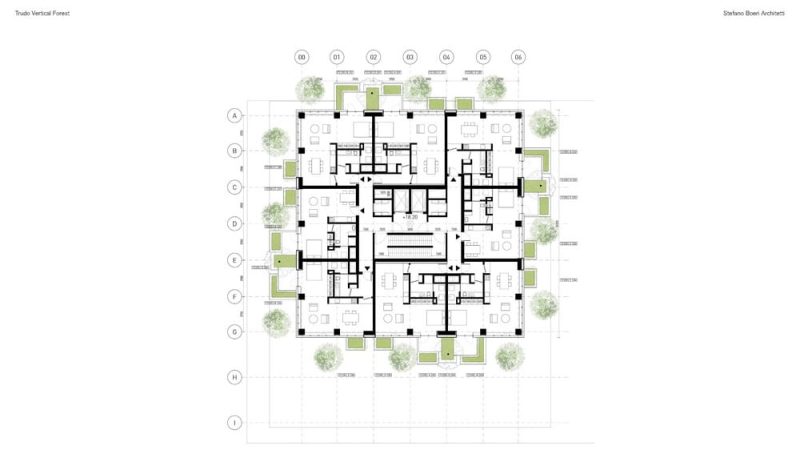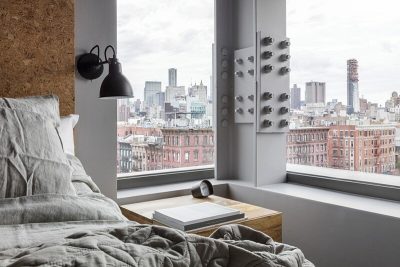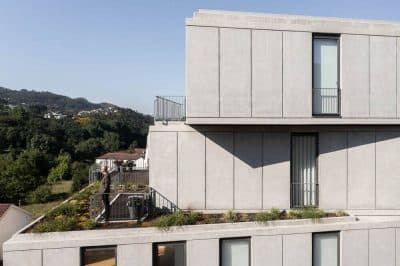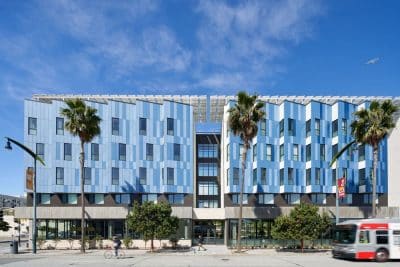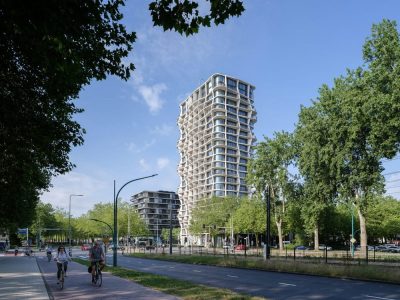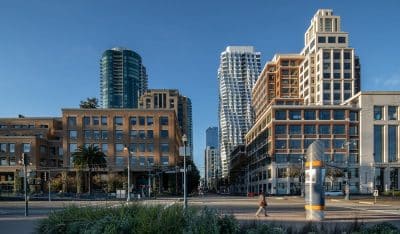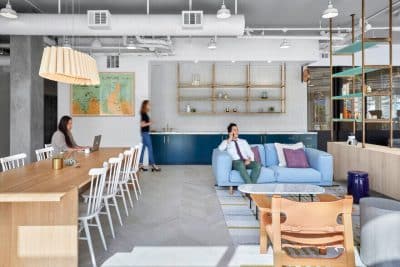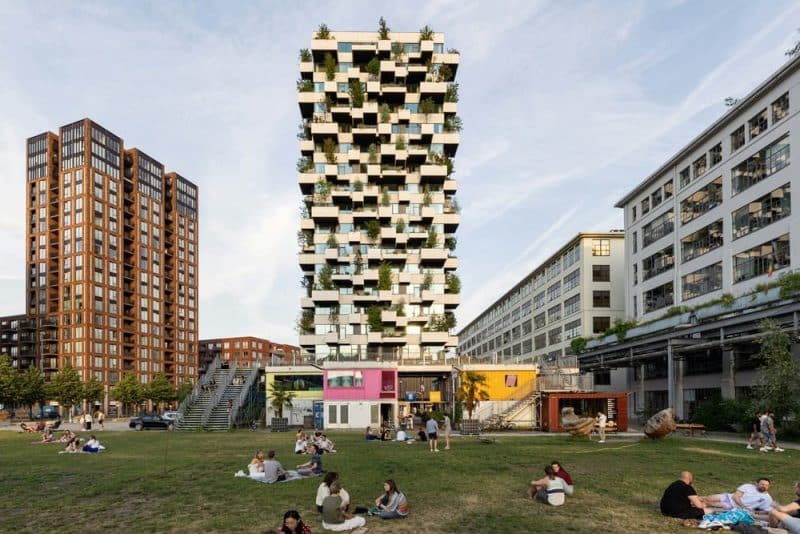
Project: Trudo Vertical Forest
Architecture: Stefano Boeri Architetti
Location: Eindhoven, The Netherlands
Year: 2021
Photo Credits: Paolo Rosselli
Trudo Vertical Forest by Stefano Boeri Architetti applies the Vertical Forest model to social housing, turning a 19‑storey tower in Eindhoven into a living ecosystem that combines affordability with biodiversity. Moreover, this project proves that green architecture can be inclusive rather than exclusive.
Green Façades as Climate Shields
First, each of Trudo’s four façades hosts 135 trees and 5,200 shrubs in specially designed pots. Consequently, the vegetation absorbs CO₂ and fine dust, while shading reduces the urban heat island effect. Furthermore, rainwater harvesting—collected in four 20,000‑litre cisterns—irrigates the plants, creating a closed‑loop system that minimizes water waste.
Modular Homes for Diverse Needs
Each of the 125 social housing units measures under 50 m² yet includes a 4 m² terrace with its own tree and 20 bushes. Thus, residents—from students to young professionals—enjoy private green space at low rent. Moreover, prefabricated concrete modules and six pot types cut construction time and costs, making high‑quality, nature‑rich homes financially viable.
Ecosystem in the City
Located in the former Philips ‘Strijp‑S’ district, Trudo Vertical Forest transforms a once‑closed industrial area into a creative hub. The tower’s plants foster urban biodiversity, attracting birds and insects. At the same time, the green terraces offer residents visual relief and mental well‑being in a dense metropolitan context.
Maintenance and Community Stewardship
Thanks to collaboration with botanists and horticultural firms, all species were chosen for resilience in Eindhoven’s climate. The client, social housing provider Sint Trudo, centrally manages maintenance—ensuring the forest remains healthy and vibrant. As a result, tenants live in a well‑cared‑for environment without additional responsibilities.
A New Standard for Social Housing
Finally, Trudo Vertical Forest demonstrates that affordable housing need not sacrifice quality or sustainability. By integrating real trees into every home, Stefano Boeri Architetti has created a prototype where social equity and environmental responsibility go hand in hand. In doing so, the project sets a new benchmark for cities worldwide facing both housing shortages and ecological challenges.

